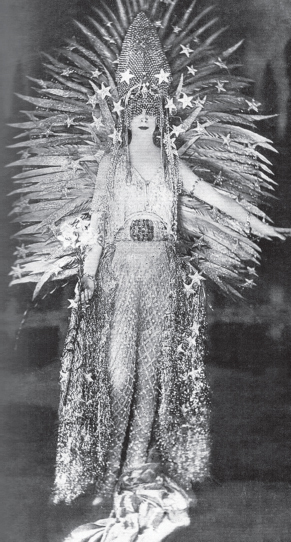

Luisa Casati, an Italian heiress, socialite and muse, wowed and scandalised society in the first half of the twentieth century. But would she be considered so avant-garde today?
She wanted to be a living piece of art. The twenty-first century is knee-deep in artists vying to be controversial, many of whom are probably influenced by Luisa. Next to unmade beds in Turner competitions, cows sliced in half and a massive pair of butt cheeks cupped by a pair of hands, our generation would barely raise an eyebrow.
However, her era was still recovering from the shock of seeing women’s bare legs, so she had a captive audience. What was more outrageous was her decadent and hugely wasteful lifestyle, a contrived insanity that included: taking pet cheetahs for walkies, chivvied along by their diamond leads whilst she strolled naked in her furs (quite literally all fur coat and no knickers); booking a room at the Paris Ritz for herself and her pet boa constrictor (in case she needed a hug); adorning her naked staff in gold leaf and wearing live snakes as necklaces. At least she never ran the risk of bumping into someone wearing the same outfit.
Luisa was born in 1881 to well-heeled and extremely wealthy parents. By the 1930s, she would have frittered away every last penny of their immense fortune and accumulated eye-watering debt in her quest to be immortalised as an original piece of art. Poverty didn’t stop her obsessive desire to stand out from the crowd, as she raided bins outside theatres to find accessories, some of them made out of newspaper. Perhaps she really was the bohemian incarnate, living for art and art alone? Certainly she could use her distaste for bourgeois conventions as an excuse for cuckolding her husband to play lover and muse for the controversial and womanising poet Gabrielle d’Annunzio.
Tall, thin and eager to shock, she made an inspiring coat hanger for noted designers including Leon Bakist and Mariano Fortuny, all of them delighted to let their imaginations run riot over her body. She was particularly famous for short fiery red hair (dyed), very pale white skin, heavy black kohl and green eyes made to look large and luscious by squirting highly toxic belladonna in her eyes. She was quite the Edwardian Goth. In her bid to be unique and visually entertaining, she changed her look as many times as her and her artists’ imaginations would allow and paraded herself as a live piece of installation art through the opulent party season that was the 1920s.
Her parties were legendary, the stuff of Gatsby dreams, or nightmares, depending on your perspective. They were attended by the great and the not so good, such as the radical dancer Isadora Duncan, Picasso and several wax figures who joined guests for dinner. At these extravaganzas Luisa would emerge as a living sculpture adorned in fabulous clothes, such as a creation made from her own albino peacocks’ feathers accessorised with chicken blood.
Desperate for immortality, she also blew her fortune being a patron, and often lover, for emerging artists as long as they found new and more decadent ways to exhibit her. She was art’s greatest Narcissus. One of her many homes housed an art gallery filled with over a hundred images of her.
People may condemn her as a frivolous socialite, yet her hedonistic, idiosyncratic personality drew the art world to her. She inspired artists, poets, writers, sculptors, designers and Hollywood film stars, including Giovanni Boldini and Cecil Beaton, not to mention the Cartier panther collection. She lit the creative lights of geniuses across the artistic spectrum, including surrealism, Dadaism and even artists from the Fauve movement.
She may have spent her final years in poverty, but those who loved her made sure she was buried in style with false eyelashes and her favourite stuffed Pekinese dog. For all her faults, she was totally indifferent to public opinion and defiantly her own woman.